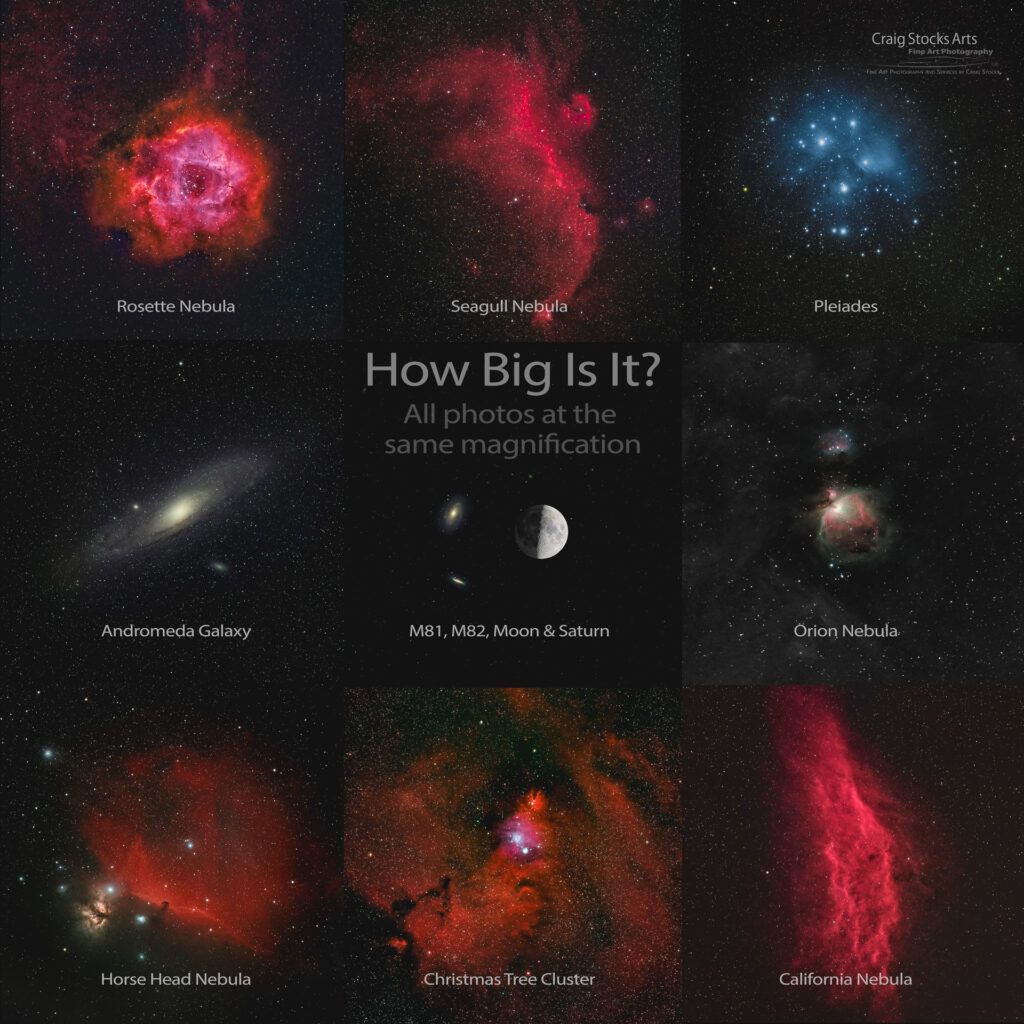Telescopes serve two main purposes, to magnify the object and to collect more light than our eyes. While we tend to assume that more magnification is always better in reality it’s often the light gathering power of a telescope that matters most.
Many of the most popular and well known features actually appear quite large. The comparison shown here shows all of them at the same magnification, it’s particularly useful to compare them to the size of the moon. What you discover is that many features appear much larger than the moon, so extreme magnification isn’t really that important.
But, many of them are very faint and the light gathering power of the telescope becomes the most important factor. These photos were all taken with a Takahashi FSQ telescope that has a focal length of 530mm with an f/ratio of f/5 which makes it a rather fast telescope well suited to astrophotography. In fact it would be considered a wide field telescope because of its relatively short focal length.
Of course some objects do need more magnification. The image in the center of the graphic shows two galaxies that would be too small to photograph effectively using a wide field refractor like the Takahashi FSQ106. It’s very hard to see but you can see Saturn just to the right of the moon – and it appears very tiny. Most galaxies, the planets and most planetary nebulae do require longer focal length telescopes.
That’s why many astronomers and astrophotographers have an assortment of telescopes. Just as a photographer needs wide angle and telephoto lenses an astrophotographer typically needs bot wide field and narrow field telescopes to be able to match the telescope to the target.

